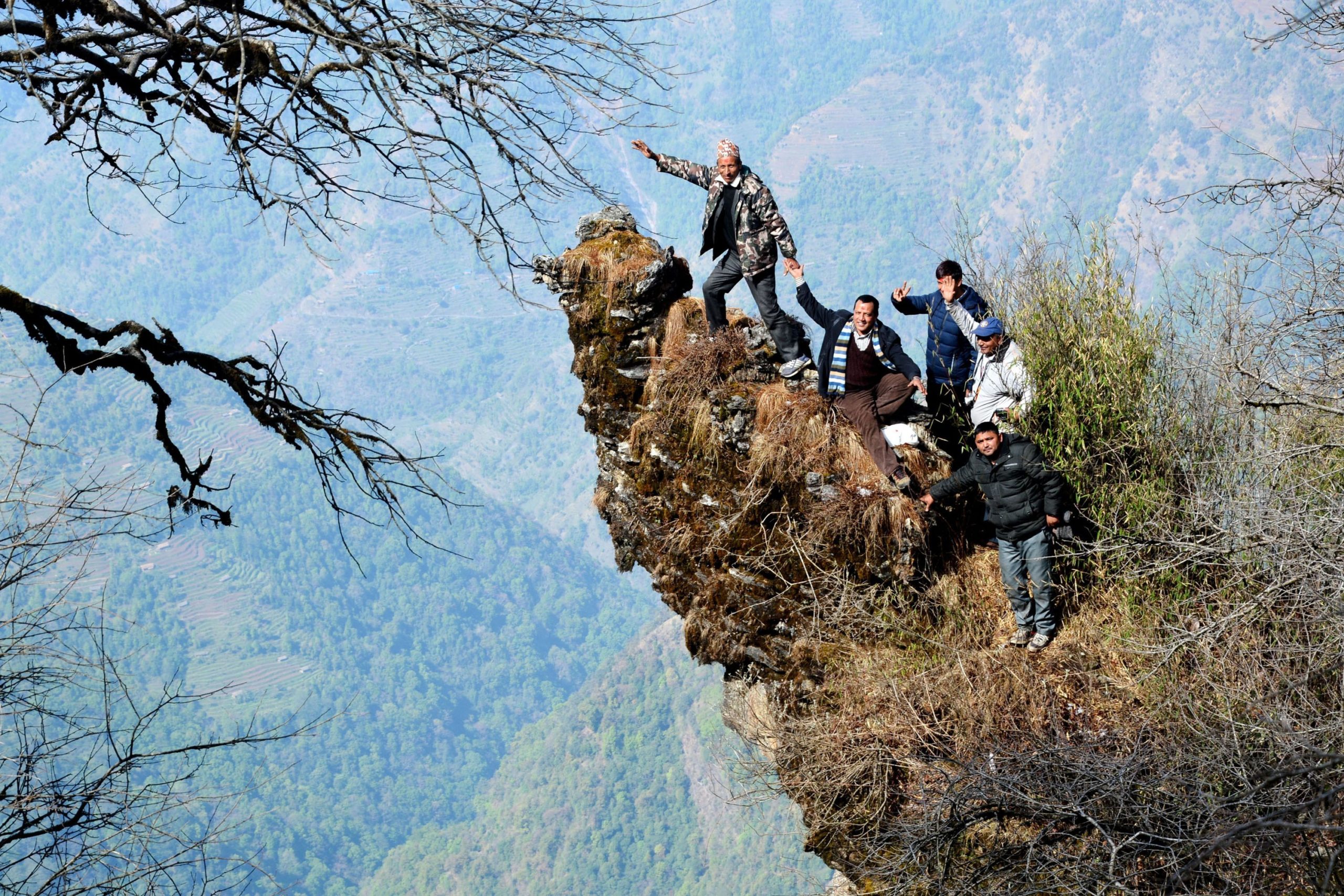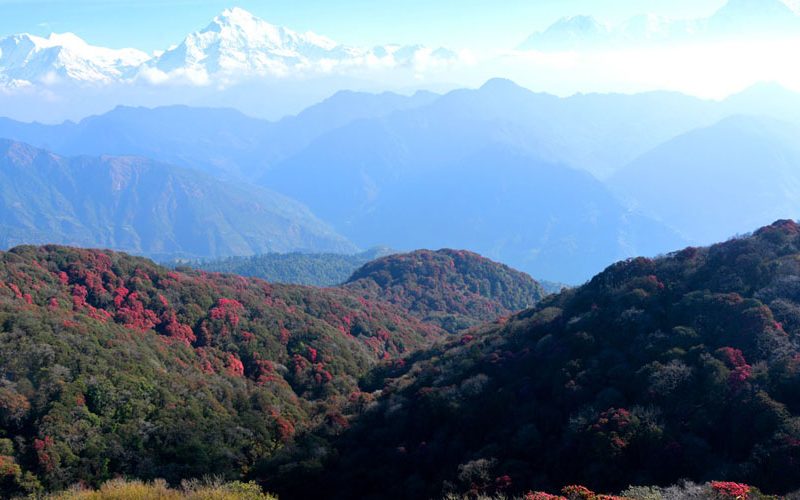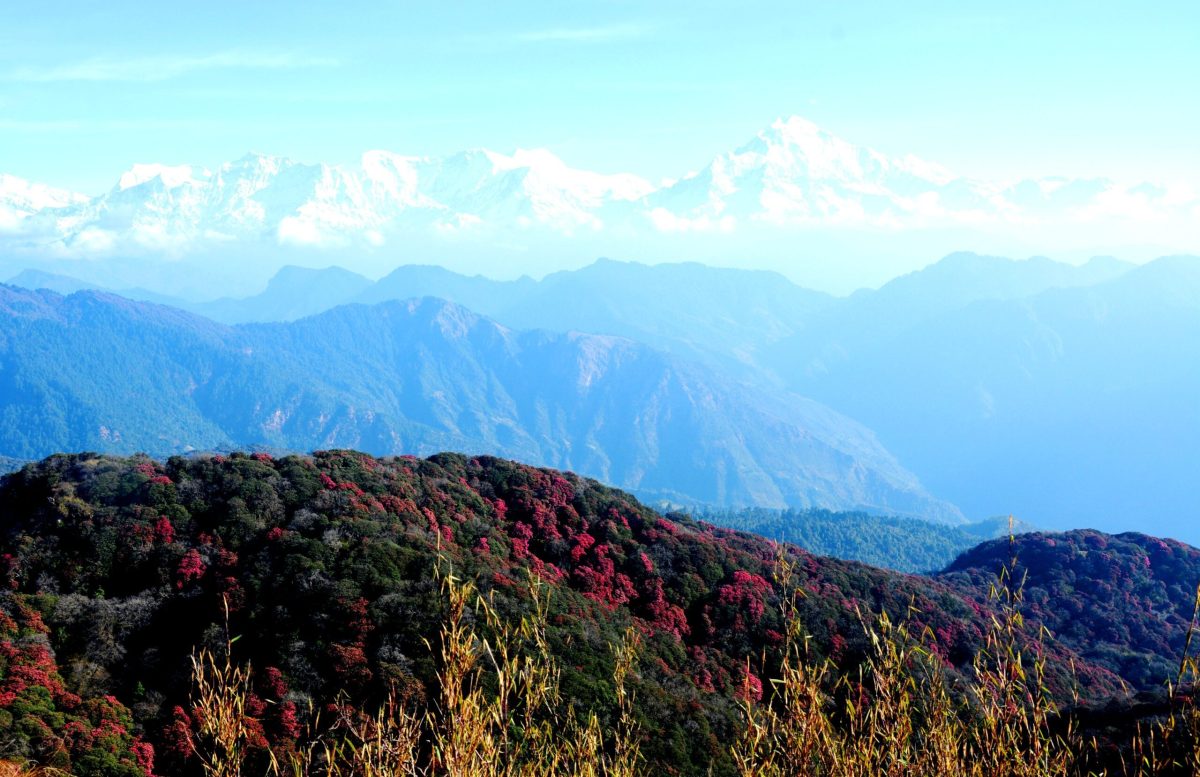Ghumte : One Of The Best Tourist Destination In Galkot Nepal
Ghumte : Tourist activity has increased in Lake Ghumte in Galkot. Since the veil has attracted tourists who believe in religion instead of enjoying nature, the veil has recently become the choice of domestic tourists. At a height of ten thousand 393 feet, the dome is considered important from a natural, religious, cultural and biological point of view.

Ghumte
According to Galkot Ghumte Tourism Development Center Chairman Jhang Bahadur Basnet, thousands of tourists visit Ghumte every year. In the past, the fair was held only on the full moon of Baisakh. For the past six years, Gurans Utsav has been held on the occasion of the New Year. According to Chairman Basnet, tourist arrivals have also increased due to tourism promotion activities. “The number of tourists is increasing due to infrastructure works including footpaths and publicity,” he said.
The temples of Siddha and Bhairav, situated at the head of a scenic dome, have also promoted religious tourism. Devotees from far and wide visit these temples, which are associated with mythological legends, in the belief that their desires will be fulfilled. There is an arrangement to visit the temple during all the months and days of worship. Ghumte has also become an attractive destination for tourists who enjoy hiking. Manish Rayamajhi, a resident of Baglung district headquarters, said that it was an exciting experience.

Ghumte
After a three-hour trek, Rayamajhi reached the top of the hill. “The journey has been very adventurous and exciting,” he said. “There is a lot of potential for tourism development in Ghumte.” The center has made it easier for tourists to climb Ghumte after constructing a three-kilometer footpath passing through Richaur, Teuwa. There is still another three kilometers of footpath to be built at the Siddhathan Orlan of Pandavakhani. Tourists using the old route from Pandavakhani have been using the old route.
Senior Vice President of the Center, Raj Thapa, said that more than Rs. 10 million has been spent so far on infrastructure works including footpaths and upgrading of temples. “There is a lot of work to be done in the Ministry of Tourism and local labor,” he said. Vice President Thapa stressed on the need for the state to increase investment to make Ghumte a tourist center. The natural beauty, the glitter of sunrise and sunset bells in the mountains, the precious herbs, the historic temples, the dense forests of Gurans, etc.

Ghumte
Tourists also climb the hill to see the red gourds blooming in the spring. Siddheshwar’s Cave, Ramche Odar, Gothathari, Bulaha Baba’s Ashram, Bhimsen Laury, Damaha Dhunga, Daha Pani, Todke Pani, Nangribhir, Paraka Soto Shaligram are some of the religious and tourist attractions of Ghumte. From the dome, one can see the palace of the Galkote king, Harichaur Bazaar known as ‘Stone Village’, the waterfall of Gaighat, Daha of Gaza, more than a dozen bridges of Gaudi and Daramkhola, and Taksar Bazaar of Gulmi.
Hundreds of wild animals including scarecrows, munals, kandevyakurs, musk deer, deer, squirrels, chitals, thars and bears are found in the hilly area. Medicinal herbs like Chiraito, Panchaanle, Bhutkes, Jatamasi, Hanumanvir, Gujargano, Pakhanbet, Shilajit, Paralchalno, Satuva, Rautemula, Eklevir are found. The summit can be reached from four points including Malma, Pandavakhani, Hill and Harichaur. Even if you reach Harichaur’s Teuwa, Malma’s Basket, Pandavakhani’s Siddhathan by car, you can reach Ghumte after walking for about three hours.
Comment Here!